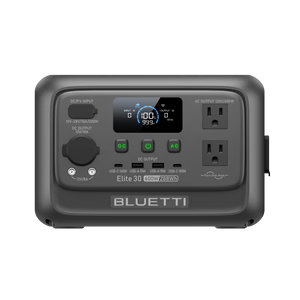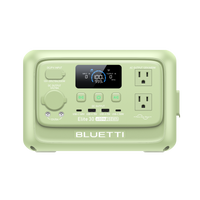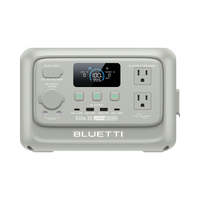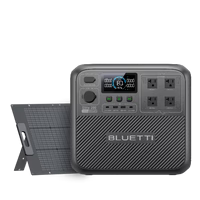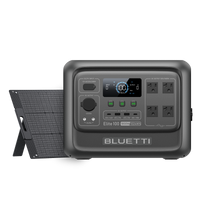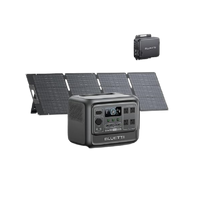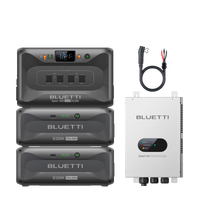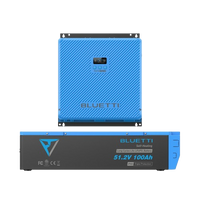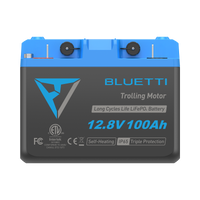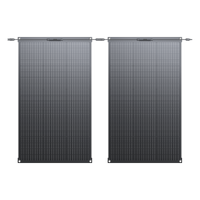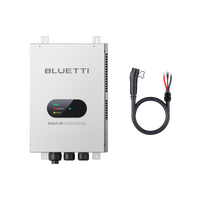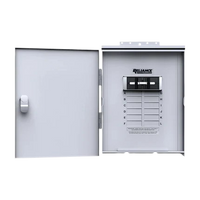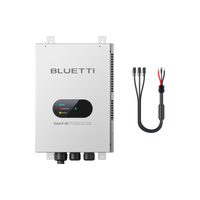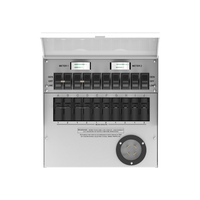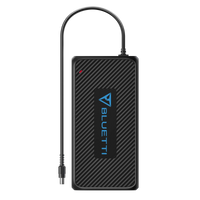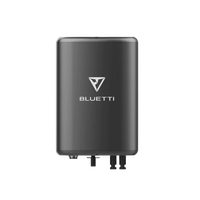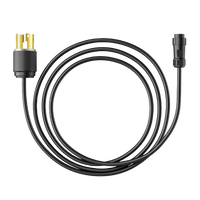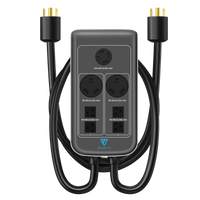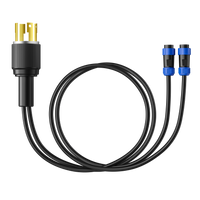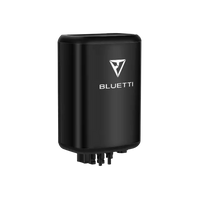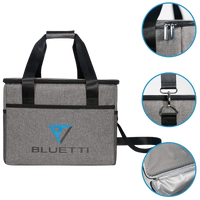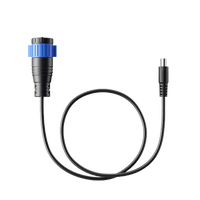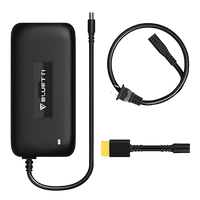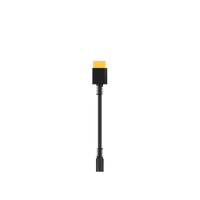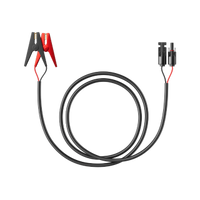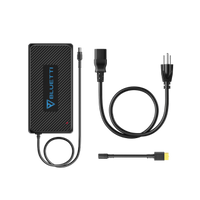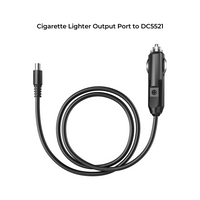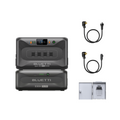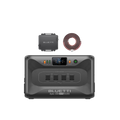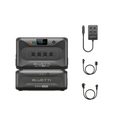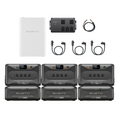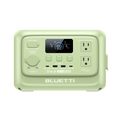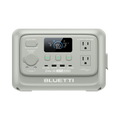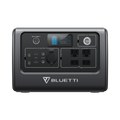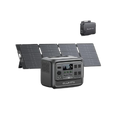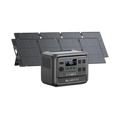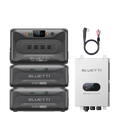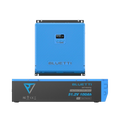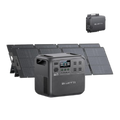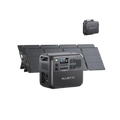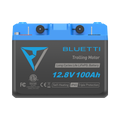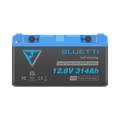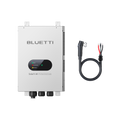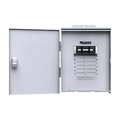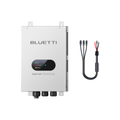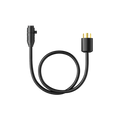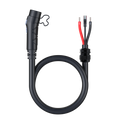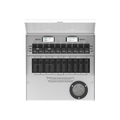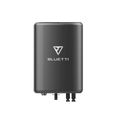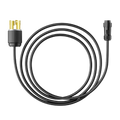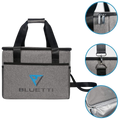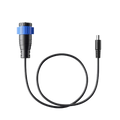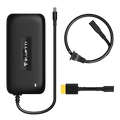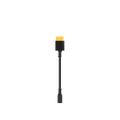Summer is a time for fond memories. Bright sunny days, outdoor activities, sports, and adventure. But summer also brings the threat of storms. Which can cause power outages. Some areas tend to get hit harder than others, especially if you live further away from the city.
Not only that, with so many people running their air conditioners, it can put too much pressure on the power grid which can trigger outages.
If you depend on medical equipment or must remain connected for work – then you can’t shrug off summer outages. You need to be prepared on a variety of levels. This guide gives you a blueprint on how to be prepared and powered no matter what comes.
How to Prepare for a Summer Outage
It is important to be holistically ready for a summer power outage: how to prepare before the power goes out, what to do during the outage and how to handle things after your electricity is back.
We have gathered the most useful tips for you to ensure you’re properly ready for an emergency power outage in the summer.
- Prepare a grab-and-go kit.
The last thing you want during a power outage is fumbling around in the dark searching for emergency supplies and kits. As an important precaution, your household must have an emergency kit ready for power outages.
That emergency kit can be stored in a duffle bag or plastic container and placed in a central, accessible area that all household members are aware of. It can be on your home’s main level, so everybody can avoid the stairs in the dark.
Your preparedness plan must begin with a grab-and-go or emergency kit for the whole family. The kit must have water, non-perishable items, solar or hand-powered communication tools, a first-aid kit, and portable power supplies. It may also include puzzles, games, books, and other ways to conquer boredom.
Make sure you consider your situation, too. Do you live alone? Have a small family? What important items does a toddler need? You must also not forget about your dog or cat.
When the power outage occurs, retrieve your grab-and-go kit. Check if your flashlights are all operational and replace batteries if necessary. Inventory your LED lamps and candles. Check your charging cables and power banks.
If it is all light out, you can set up your candles or battery-powered lights in the most commonly used rooms so they’re in place when the outage continues into the night.
- Stock up on supplies.
A long-term power outage can be caused by a major natural disaster or a downed transformer. Planning and preparing for this situation is essential to general emergency preparedness.
Here are some of the important supplies you need to stock up in your home:
- Water, food, and blanket
Staying hydrated, nourished, and warm is essential to keeping comfortable and healthy during an extended summer power outage. During the colder nights, having blankets and bedding to stay warm is vital to safety and comfort.
Always keep a four to five-day supply of non-perishable items on hand and an equal supply of water.
Your water supply should not be compromised during a normal power outage. Still, there are cases where utilities are downed. It will be agreat idea if you have a backup supply of non-perishable foods and water. Water does not expire, so always keep some plastic jugs or bottles at home.
- Medication
Are you or your family member taking any prescription medication? Ensure you have enough supply on hand at the first sign of extreme weather.
- Hygiene items
To preserve water, stock up on baby wipes and hand sanitizer. These are also surprisingly refreshing to adults.
- Sleeping bags
You may have these already for your camping endeavors. A sleeping bag is like a portal to happiness—an all-encompassing inflated hug that will keep you toasty and nice when there is no heat.
Just ensure that you keep them clean and handy at all times. It would be a shame during a power outage digging them out of your attic or basement only to realize they smell of mildew.
- Know where the nearest cooling center is located.
Take the time to visit your nearest cooling centers as heat waves crop up across your town.
Cooling centers (often referred to as cooling places) are cool sites or air-conditioned establishments built as safe locations during extreme heat or extended power outages. The buildings are often public spaces (schools, community centers, libraries, etc.) set up during extreme heat.
The goal of a cooling center is to help avoid heat-related conditions including heat stroke, heat exhaustion, and heat cramps. Keep in mind that exposure to several days of extreme heat, known as heat waves, can cause deaths in a short period. Also, people can have hyperthermia in extreme heat.
Anyone without an AC can benefit from a cooling center—normally, people who do not have a dependable cooling situation in their home.
A cooling center can let you get relief in air conditioning and lower the risk of having a heat-related illness that is caused by an extended power outage. Avoiding the extreme temperatures during the day can help you prevent the risky impacts of heat.
- Prepare an evacuation plan.
Expecting the unexpected has become a norm in modern society. Anything can occur anytime and anywhere. Most people still find sanctuary in their homes and would rather not think about danger following them there.
Unluckily, home emergencies such as a summer power outage can happen to anyone at any time. Having an evacuation plan and knowing what to do in the event of an emergency can help lessen the negative effect it can have on your entire family.
Making an evacuation plan is an evident next step to ensure everybody in the family understands what to do when the unthinkable turn into reality. That must include:
- Finding, duplicating, and keeping important files and documents in a safe deposit box.
- Putting the emergency plan in writing to help family members know it.
- Keeping stored documents updated.
- Assessing your plan to determine if you must make changes.
A great way to start planning is to determine potential emergencies and rank them based on how likely each is to occur. After you have listed them, consider assessing them based on the following:
- The correct response for the family and possible consequences.
- How quick will you need to initiate a response or evacuate?
- Which items will you remove or bring with you if time allows?
Determine what to do in every power outage situation, and determining responses in advance will enable your family to act fast in an emergency. Also, creating a list of valuables and knowing their location earlier will help speed up the evacuation process.
After the evacuation plan is activated, it becomes easier to panic. Having all that details in writing helps keep your emotions from causing delays or getting in the way.
Also, you must remind your family that staying alive is the first order of business during an emergency. Getting every person to safety and properly communicating how to do that with others is the ideal way to avoid exposing them to unnecessary dangers.
Your emergency evacuation plan must cover each of the following:
- Communication plans
Making a reunification plan is the initial step in communicating everybody’s safety and whereabouts. When emergency services are needed, call 911 as soon as possible.
- Rendezvous points
Determine a single place for your family to meet during a power outage. It’s also great to pick a backup location if your first option does not work out.
Making a reunification plan to determine where everybody will meet will help determine if everybody is accounted for and safe.
- Stay hydrated.
Summer is all about the heat. But when a power outage accompanies it, it is important to stay hydrated.
As you age, your body’s water percentage lessens, putting you at risk of dehydration. Water is vital for body temperature, ingestion, and digestion, maintaining circulation, acting as a lubricant, removing waste products from cells, flushing the urinary tract, and more.
Typical signs of dehydration include feeling lethargic, headache, dry tongue, thirst, and dry mouth. Other symptoms include not urinating, feeling dizzy, having dark yellow urine, sunken eyes, dry skin, and fast breathing or heartbeat.
Also, anything caffeinated will act as a diuretic and dehydrate you. Replacing caffeinated tea, coffee, or soda you normally have with a glass of water is one of the best ways to stay hydrated during a power outage.
For an average adult, the suggested fluid intake is 30ml per kilogram of body weight. That means you must drink half of your weight in ounces of non-caffeinated drinks to stay hydrated.
- Stay indoors as much as possible in the heat of the day.

Severe summer storms can cause power outages that last days. During hot weather, you must remain indoors as much as possible to maintain comfort and safety until the power is restored.
- Inside the home
Isolate and close off the warm areas of your home, like sunrooms. When sleeping, consider moving to a place without a carpet. Take note that carpets will absorb heat, too. That’s good if you’re trying to keep warm but works against you if you’re trying to keep cool.
You can use blankets, thick towels, or blackout curtains to cover the windows.
- Control your body heat
Apart from staying hydrated, your clothing can help you stay cool. Any clothing you wear must be thin and loose-fitting. Short-sleeved skirts, tank tops, workout clothes, swimming trunks, or shorts would be great.
Nonetheless, if you must go outside, it will help if you cover as much of your skin as possible to prevent sunburns. Wear long sleeves and lightweight clothing.
Heat waves during a summer outage can be a serious health risk, but you can prevent the risk with some changes to your summer plans.
- Consider backup power.

These days, we have more options than ever with battery storage and solar power. Home backup generators are reasonable and not automatic. Standby generators handle power and keep the entire house working if that’s what you need.
A severe summer storm after an outage sends hundreds of utility consumers to the hardware stores and home centers for a portable generator. Early customers are successful but do not always get what they need and must take whatever the store has available.
A better way is to prepare for an outage before it occurs. Identify power requirements, the backup power that does the job most effectively, and then invest in a quality backup system.
Fortunately, BLUETTI’s products got you covered. Some of our best products are the BLUETTI AC200P portable power station, BLUETTI AC200MAX + 3*PV200 power station, and the BLUETTI AC300 + 2*B300.
Final Thoughts
Now you’ve got a blueprint for how to remain powered and protected for the next outage. It begins by getting back up power solar equipment. And that’s what Bluetti offers. Check out our site and feel free to contact customer support if you have any questions.
Shop Bluetti for all your solar needs!





